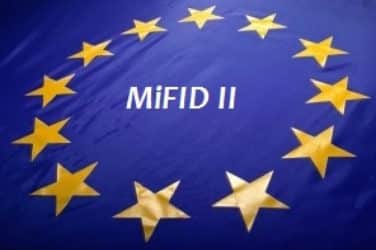Although the big 3 January 2018 deadline for implementation of MiFID II – all 30,000 pages of it – has come and gone, it is not yet time for MiFID II implementation teams to rest. There is still much work to do.
Many aspects of MiFID II are being rolled out during the remainder of this year – including key tenets relating to Systematic Internalisers (SIs), the use of the Legal Entity Identifiers (LEIs), and market reports.
What’s more, the last-minute 20-month reprieve given to the commodities and derivatives markets by regulators means that an entire swathe of the marketplace, including the key London Metal Exchange (LME), Eurex and ICE Futures (the former Liffe) markets, won’t go live with the new rules until 2020 – creating additional
complexity down the road.
Even in the areas where there was reasonable certainty in the run-up to the deadline, firms need to review the work they’ve completed to date. Many firms’ efforts at compliance don’t represent the finished article. The jury is still out on what a final design will look like with many regulated firms still attempting to finesse and/or industrialise their response to MiFID II in order to comply for the long term, efficiently and effectively. In addition, most firms have not yet really considered how compliance with MiFID II could be pivoted into business benefit – even though there is a general consensus that substantial business value could be achieved.
The January launch day went more smoothly for some than for others. According to a poll of financial trading technology professionals attending A-Team Group’s ITS MiFID II Briefing conference in London in February, some 60% of audience respondents said implementation day went generally fine, with a few niggles but no major issues. A third of respondents described the experience as ‘a bit hairy’ and have some mopping up to do. Just 5% said it was a walk in the park with everything going according to plan. No-one reported ‘a complete nightmare’, one of the options on the poll. A small group – 2% of respondents – selected the ‘What’s MiFID II?’ option.
Joking aside, consensus seems to be that the majority of regulated firms achieved compliance with the bulk of MiFID II in time for the deadline – but concede that their solutions may not be optimal or final. For many, that means there could be quite a lot of additional work to be done.
UK regulators have indicated general satisfaction with the market’s attempts at compliance thus far, while acknowledging that they believe firms’ efforts around MiFID II are far from complete. How long the regulators will give the marketplace to come up with final solutions that are defensible and will withstand any kind of market test remains to be seen. But it’s clear that regulators will start to look at enforcing MiFID II sometime in the second half of 2018. At this point, firms will discover just how robust their response has been.
Meanwhile, a second A-Team Group poll questioned whether there is a silver lining in the cloud of MiFID II. Just over half of respondents (56%) said MiFID II provides some benefit for handling other regulations; 37% said they are seeing significant benefits in addressing other regulations and improving business processes. A small minority (5%) suggested there would be little opportunity to recycle their MiFID II solution, and 2% said there was zero chance of putting all the time and effort expended on MiFID II to other uses.
This paper explores how work on MiFID II is continuing through 2018 for firms – and regulators. It will look at some of the key areas of ongoing roll out of the regulation, including the postponement of the go-live of commodities and derivatives marketplaces. It will also discuss how firms are reviewing the work they completed under pressure for the 3 January deadline, with an eye towards improving and industrialising those processes.
The full whitepaper can be found here:
InterxionM2_May2018_Print_HR-FINA-June5 (2)






